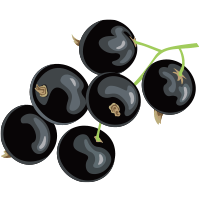It expresses itself in a dark, almost black wine with a hint of oak, vanilla and toast in the aroma, combined with dark berries, cherries and spices. Opulent on the palate with more dark fruit, subtle tannins and a long, persistent and clean aftertaste.
The wines from Saint-Estephe are precisely known for being able to store for almost forever, and in this area Chateau Tronquoy-Lalande certainly does not stand out. On the other hand, it actually stands out in terms of grape compositions. Because while it is primarily Cabernet Sauvignon that dominates in Saint-Estephe with Merlot playing second fiddle, it is precisely Merlot that plays the main role in this bottle.
Because the wine is dominated by the Merlot grape, it is already available very well. But it will easily last several years, and even a decade or two, in the cellar.
About Château Tronquoy-Lalande
The château had several different owners until 1968, when it was bought by Jean Texier and his wife Arlette Castéja-Texier. She would end up running it for 40 years. In 2006, Martin and Olivier Bouygues discovered the small wine château, which is historically known for having one of the finest terroirs in all of Saint-Estèphe. After specialist advice, they decided to buy the castle, marking the start of a new era in its history. They then embarked on a large-scale modernization programme, culminating in 2010 with the construction of a large barrel hall, a vertical press and 22 temperature-controlled stainless steel tanks.
Château Tronquoy-Lalande’s terroir stretches over 30 hectares in the heart of the famous Saint-Estèphe appellation. The Merlot grape flourishes in the Tronquoy-Lalande terroir. 52% of the vineyard is planted with Merlot, which distinguishes Tronquoy-Lalande from its neighbors where Cabernet Sauvignon dominates.
However, Cabernet Sauvignon accounts for 39%, followed by Petit Verdot (6%) and Cabernet Franc (3%). The vineyards benefit from an ideal exposure, perfectly adapted to optimal grape maturity. The soil consists of an eight meter deep layer of gravel and clay. The gravel ensures good drainage, while the clay holds the water in depth, which the vines can take off as needed.
The vineyard is 23 meters above sea level. The springs, formed naturally over centuries, encourage rainwater to run off. The nearby Gironde estuary also acts as a temperature regulator.
The vineyards are carefully cultivated in the traditional way. Plowing is done using the “four-way” method. Plowing loosens and aerates the soil, making it easier for rainwater to penetrate. It is also a natural way to remove weeds and increase the microbial life in the soil. Château Tronquoy-Lalande is managed under the supervision of Hervé Berland by Yves Delsol, who has been at the château for over 30 years.




